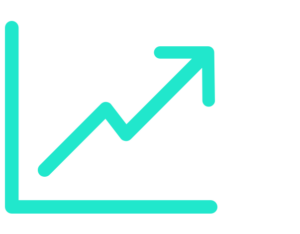Do you want to know more about advertising competitive intelligence?
Digital technology has transformed the advertising industry. But not just in terms of creative outputs. It’s meant more product launches and improvements. The ability to optimise campaigns faster. More ways to reach and listen to consumers. Plus, more opportunities for new entrants to disrupt markets.
All of this points to an increase in speed, growth and competitiveness. Ad and marketing departments have to work smarter to gain and maintain an advantage.
A deep understanding of your competitive environment is therefore crucial. It can help you protect what you have. Whether you’re preventing or responding to risks or seizing opportunities.
This is where competitive intelligence comes in. In this article, we’ll outline what it is, how to use it and the benefits of doing so.
What is Advertising Competitive Intelligence?
Advertising competitive intelligence refers to insights about your competitors’ advertising strategies. This could be their outputs (i.e. campaigns). Or it could be the patterns, trends and insights that inform them.
It involves gathering, analysing and interpreting data. The goal is to use these insights to improve your own campaigns and strategies.
By understanding competitor strengths and weaknesses, you can optimise your ads. For example, this can include target audience selection, messaging and media channels. The ultimate aim is to maximise return on investment (ROI).

Components of Advertising Competitive Intelligence
Market Analysis
Market analysis involves understanding your market. Examples include target audience demographics, psychographics and media habits. By analysing trends, you can identify opportunities and tailor your message. For example, it might point you towards using sustainability messaging.
Market analysis also involves monitoring economic factors. Among them are spending patterns, disposable income and economic indicators. These factors impact how consumers interact with advertisements and what they value.
Understanding media consumption habits is key too. It means knowing where your audience spends time. Are they on social media, streaming services or reading online news? This knowledge helps in allocating your advertising budget effectively.
Competitor Ad Monitoring
Advertising competitive intelligence means tracking your competitors’ ad activity. This might include their placements, messaging and creative elements.
This helps identify strengths and weaknesses in their approach. You can then create differentiated campaigns that resonate with your audience. For example, if competitors use celebrity endorsements, you might consider user-generated content.
Competitor ad monitoring also includes budget analysis. i.e. Knowing how much they are spending on different channels. This insight can guide your spending decisions. Are they investing more in digital or traditional media? You can adjust your strategy based on key observations.
You can also look at the creative approaches your competitors use. i.e. Analysing their use of visuals, copy and calls to action. This can inspire your campaigns. It shows where you can stand out.
Trend Analysis
Advertising competitive intelligence can help you understand key trends. This might be evolving consumer behaviours or trends within the advertising profession.
Once understood, you can incorporate them into your campaigns. An example might be a rise in emoji use in marketing. Trend analysis helps keep your ads relevant and engaging.
You can analyse technological advancements too. Technologies like augmented reality (AR) and virtual reality (VR) are changing advertising. Understanding these trends can help you innovate and reach your audience in new ways.
Identifying emerging marketing tactics is vital for campaign improvement. For instance, the use of interactive content is growing. Incorporating these tactics into your campaigns could mean better engagement.
How to Use Competitive Intelligence in Advertising
Transforming intelligence into actionable insights requires strategy. Here are the key steps you need to consider.
Data Collection Techniques
There’s a wealth of information available to you. You just need to know where to look and how to gather it.
For many years, this meant manual processes. Tasking members of the team to identify sources and track them periodically. Or spending thousands on periodic reports that are packed with insights but soon out of date.
Technology has changed all this, of course. What started with RSS feeds and Google Alerts has now entered the era of AI. Organisations use AI market intelligence platforms to automate the data gathering process.
It’s making light work of what was once a major drain on resources. An organisation can discover competitor and market insights in real-time. If it’s online, it can be tracked and stored, ready for analysis.
This data can also be combined with market research in the form of surveys and workshops. It provides you with everything needed to make smart decisions about your advertising. Well, almost…
Tools for Analysis
AI has streamlined the data gathering process. But to become usable intelligence, it needs to be analysed.
Technology can certainly help you make sense of the numbers. But, in truth there’s still a need for human analysis. You need market experts to draw conclusions from the data. Even data that’s been analysed by technology first.
That might mean building your own insights team. But it doesn’t have to. A select few AI market intelligence platforms provide market experts to assist.
At first, they’ll help to set up your advertising competitive intelligence. And as the data floods in, they’ll curate and make sense of it. You’ll have access to real-time data through alerts. But also regular reports that serve up high-quality, usable insights.
This competitive intelligence can be shared within the department. It can also be shared with others.
Strategy Formulation
Now you have advertising competitive intelligence, it’s time to use it. And that starts with strategy.
Your insights can form the basis for a change in direction or tactics. It can show you a new way of thinking about the challenges you face. A way your competitors might not have considered.
This could involve targeting new segments, refining messaging or adopting new creative approaches.
For example, if competitors target a broad audience, find a niche. Tailor your message accordingly. Focus on specific pain points. Or preferences that your competitors overlook.
You can use trend analysis to innovate your campaigns. If a new advertising technology is emerging, be an early adopter. This can set you apart from competitors and capture audience interest.
Advertising competitive intelligence will help you to regularly review and adjust your strategy. Competitive landscapes change. Staying flexible ensures you can adapt to new challenges and opportunities.
Benefits of Advertising Competitive Intelligence
Competitive intelligence offers many benefits. It enhances campaign success and financial gains.
 Enhanced Targeting
Enhanced Targeting
Understanding your competitors’ target audiences helps refine your own. This leads to higher conversion rates and better ad spend ROI. Advertising competitive intelligence helps you identify untapped market segments. You can use your insights to refine messaging for your audience. For example, using tailored messages to target overlooked demographics.
 Increased Campaign Effectiveness
Increased Campaign Effectiveness
Learn from competitors’ successes and mistakes. Identify messaging that resonates and avoid approaches that don’t work. Through analysis, you can identify what makes competitor campaigns successful. Then incorporate these elements to increase your campaign effectiveness. For example, adopting new creative formats.
 Higher ROI
Higher ROI
Optimising your strategy based on competitor insights maximises impact. Advertising competitive intelligence gives you the ability to identify the most cost-effective channels. You can avoid ineffective strategies to minimise wasted spending and increase your margin. For example, reallocating your budget based on competitor performance.
Concluding Thoughts on Advertising Competitive Intelligence
 By consistently gathering and analysing data, you can stay ahead. Anticipate competitor moves and capitalise on trends.
By consistently gathering and analysing data, you can stay ahead. Anticipate competitor moves and capitalise on trends.
But the insights from advertising competitive intelligence are only valuable if acted upon.
Experiment with new strategies based on your findings. Test messaging. Explore creative formats. Optimise media buys.
This continuous cycle of learning, adapting and refining is key to sustained success.
The landscape of advertising is constantly evolving. Staying informed about new advancements can provide a competitive edge.
Remember, competitive intelligence is not just about reacting. It’s about being proactive and strategic. Use insights to not only counter competitors but also to innovate and lead in your market.
…
FAQs on Advertising Competitive Intelligence
- How can advertising competitive intelligence improve my ad campaigns? Competitive intelligence provides insights into competitors’ strategies, market trends and consumer preferences. Analyse this data to refine targeting, optimise messaging and find new opportunities. For example, understanding competitor ad spend can help allocate your budget better.
- How can I gather competitive intelligence on my competitors’ advertising efforts? Use various methods including AI market intelligence platforms, surveys and focus groups. Industry reports and marketing publications are also valuable.
- Can competitive intelligence help identify new market opportunities? Yes, it can reveal market gaps and opportunities competitors might miss. Analyse their strategies to identify underserved segments or trends. Tailor your campaigns to these areas for a first-mover advantage.
- How can I use competitive intelligence to refine my ad messaging? Analyse successful and unsuccessful competitor messaging to refine your own. Incorporate elements that work well and avoid those that don’t. Adjust your tone, highlight different features, or use new creative formats.
- How does trend analysis fit into advertising competitive intelligence? Trend analysis tracks consumer behaviours, technological advancements and popular messaging. Stay ahead of trends to keep your ad campaigns relevant. For example, if short video content is trending, include it in your ads.
- How do I turn insights from competitive intelligence into actionable strategies? Link your intelligence campaign to your goals and challenges from the start. Use tools like WMC for relevant insights. Share intelligence with other departments for broader impact. Human analysis can make insights more actionable.
- How can I track campaign effectiveness after using competitive intelligence? Use KPIs like click-through rates, conversion rates and return on ad spend. Compare metrics before and after applying competitive intelligence. Tools like Google Analytics can help monitor these metrics in real-time.


